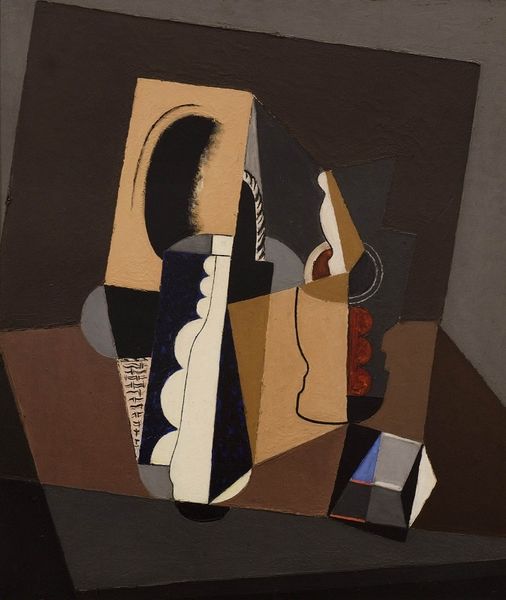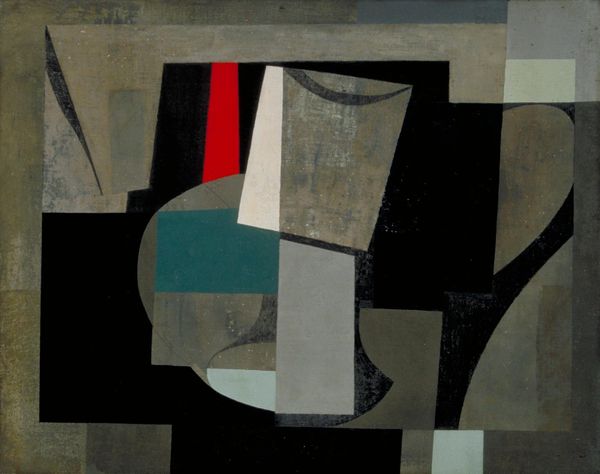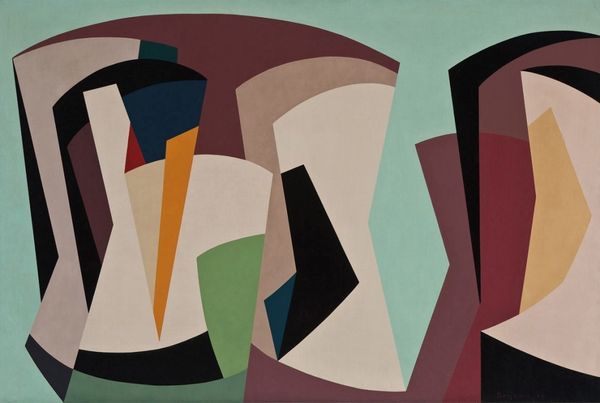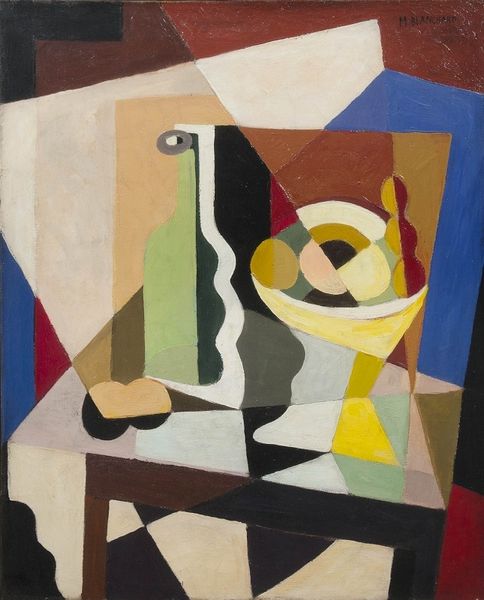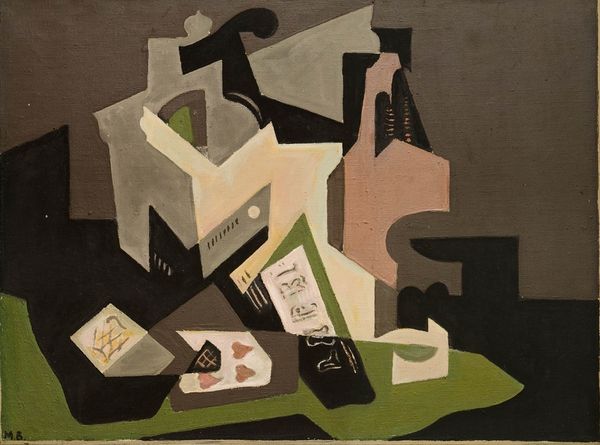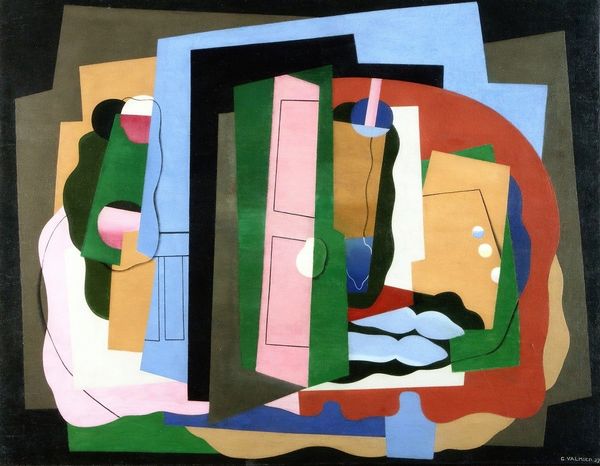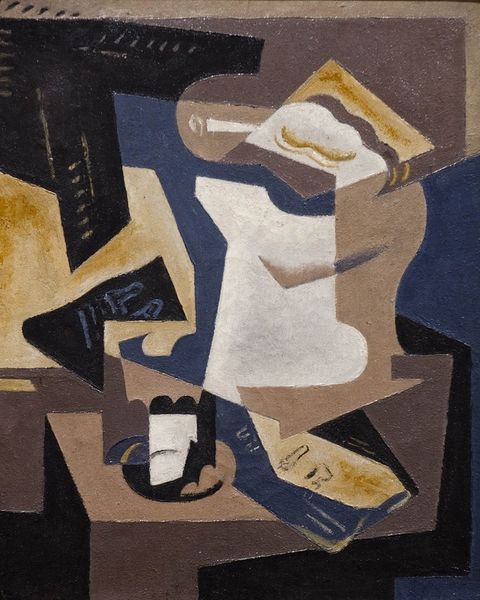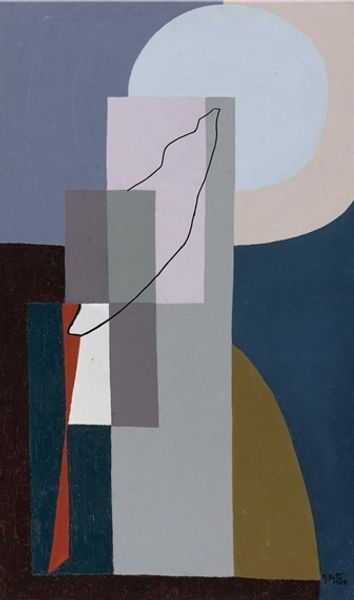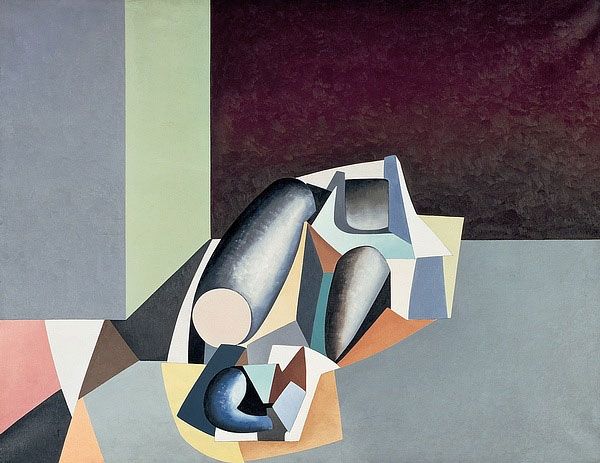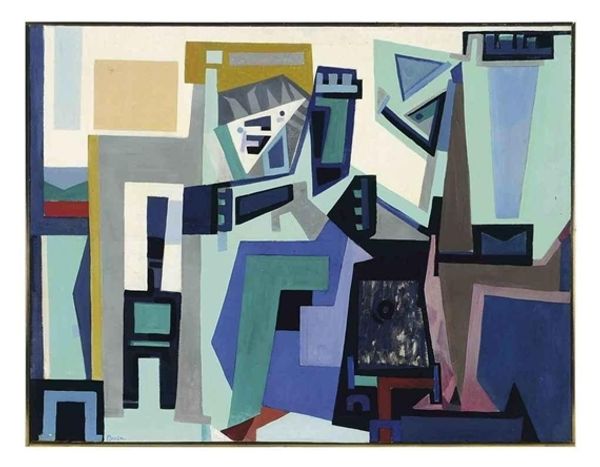
painting, oil-paint
#
cubism
#
painting
#
oil-paint
#
geometric
#
abstraction
#
modernism
Copyright: Public domain
Curator: Upon viewing this piece, what is your immediate impression? Editor: A muted discord. I’m struck by the severe angles against the washed-out palette. It's unsettling, as if the artist is forcing coherence onto fractured memories. Curator: That is a resonant description. You are observing María Blanchard’s "Cubist Still Life" created around 1917. It is oil on canvas, and showcases Blanchard’s engagement with Cubism, notably Analytic Cubism, though tinged with her own distinct sensibility. Note the fracturing of form, geometric structure, and limited color palette, quintessential elements. Editor: Cubism’s agenda with fragmented forms is evident, but Blanchard employs a unique palette of ochres and greys, establishing a strangely subdued yet strong presence. I want to consider its reception in light of the period—Europe consumed by World War I. Curator: Precisely. Blanchards oeuvre offers us an entry point to examine Modernism at this critical moment in time. Note that the geometric breakdown, as opposed to naturalistic presentation, provides an interpretive key into Modernist concerns of representation as structural composition. Editor: It could even reflect, in an abstract way, the social fragmentation occurring on a grand scale. Do you agree this connects Blanchard to a network of artists struggling to come to grips with global transformations, who use abstraction as an appropriate vehicle for expressing disruption? Curator: Without a doubt. Her composition, which appears deliberately fractured, invokes visual language that could challenge viewers’ preconceptions about painting's inherent representational duty. And note how the restricted tones focus our attention on the formal relationships among forms and space. Editor: Blanchard seemed deeply attuned to the turmoil of her epoch, her still life becomes much more than a formal exercise. Its austerity perhaps mirrors an artist navigating an uncertain future, attempting to stabilize or reconfigure their immediate surrounding realities through aesthetic innovation. It makes the artwork poignant and timely, as much as it's beautiful to view. Curator: Indeed. I've thoroughly enjoyed analyzing with you the formal complexities alongside their historical import.
Comments
No comments
Be the first to comment and join the conversation on the ultimate creative platform.
